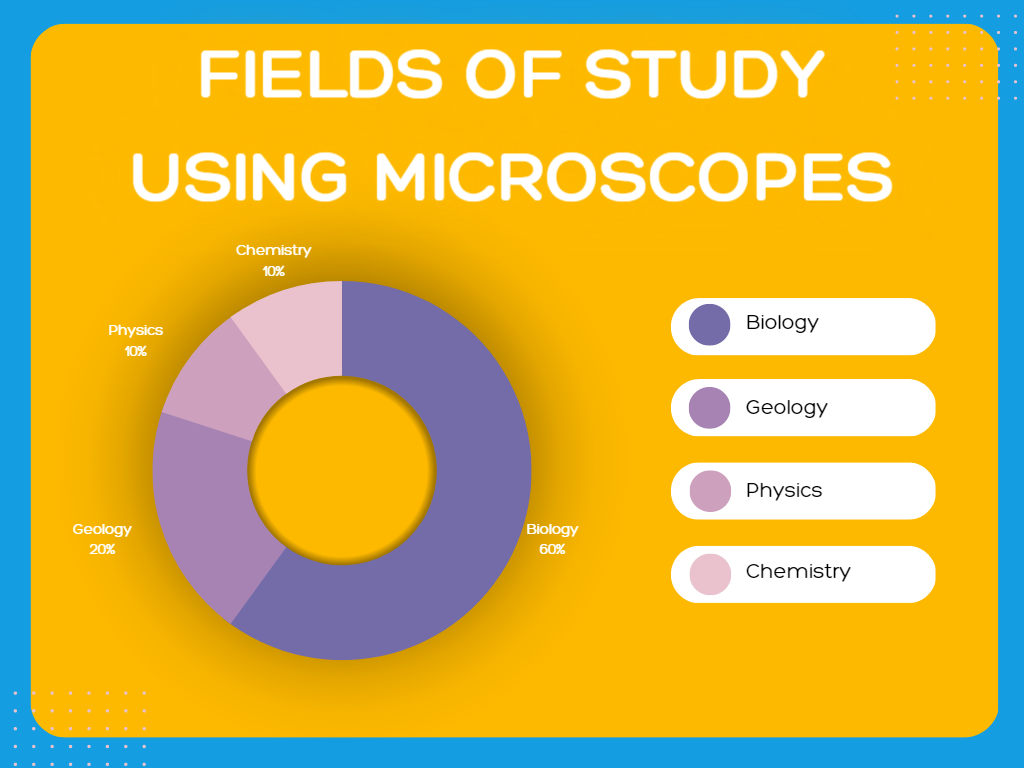Being naturally curious and filled with an adventurous spirit, children often have a million questions about the universe and how things work. A microscope for kids is an excellent way for kids to learn and discover the world as they’ve never seen it before. From observing the tiny hairs on a spider’s legs or the cells in a leaf, introducing kids to microscopy and STEM learning from an early age is highly beneficial to developing their young minds.
Our Top Picks
Kidsgearguide may earn a small commission should you purchase a product through one of our affiliate links.
Different Types of Microscopes
There are three main types of microscopes:
Optical or light microscopes use light to magnify and view tiny microscopic objects like cells and bacteria, much like a mini flashlight shining on objects so you can see them. They use special lenses that bend light to magnify the objects. These are the microscopes that most people are familiar with.
Light microscopes’ advantages are that they’re affordable and easy to use, making them perfect for kids. They can be used to observe live and preserved specimens, but their limited resolution prevents them from observing very small details. This also has an impact on the image quality of the sample. Light microscopes can also not be used to observe structures smaller than the wavelength of light.
Electron microscopes use a beam of tiny electrons rather than light to magnify tiny objects so that you can view and study them. Since these microscopes use electrons to create images, they have much shorter wavelengths which can create much higher magnified images. Think of it as a superpowered flashlight that can see things even tinnier than those viewed by a regular light microscope, much like viruses and cell structures.
Besides the fact that electron microscopes have an amazing resolution and can observe structures as small as atoms, they are very expensive and require specialized training. They can also not observe live specimens as the sample has to be dehydrated, stained, and placed in a vacuum, altering the specimen’s structure and composition. Unfortunately, the resulting images lack color and are only available in greyscale, making distinguishing between different components difficult.
Stereo or dissecting microscopes help you to view 3D objects in incredible detail. Almost like wearing 3D glasses in the cinema, but instead of looking at a movie, you can study and view real objects from different angles and see all its detail. It is mainly used to look at objects too large or thick to be viewed through a regular microscope. This microscope is often used in laboratories to study and examine insects, flowers, and rocks.
These microscopes are easy to use, and the samples require little preparation. Unfortunately, the magnification range is quite limited. Compared to other microscopes, they have a lower resolution, which is unsuitable for applications requiring higher magnification and detail.

Parts of a Microscope
Microscopes have many different parts that work together to help us observe things that are too small to see with the naked eye. Below are some standard parts that you will find on a microscope:
- You use the eyepiece or the ocular lens to examine the object you want to observe. The eyepiece is located on top of the microscope with a magnification of 10x. The eyepiece helps to enlarge the image of the viewed specimen.
- The objective lens is apart that can be found close to the specimen. Normally the different magnifications are 4x, 10x, 40x, and 100x. This lens is used to enlarge the image of the object being viewed and can be changed from one magnification to the next by rotating the nosepiece.
- The flat surface on which the specimen is viewed is called the stage. A hole in the middle of the stage allows light to pass through.
- The coarse and fine focus knobs can adjust the microscope’s focus. The coarse focus knob moves the stage up and down to bring the object being viewed into focus. The fine focus knob is used to make smaller adjustments to the focus.
- The microscope’s arm and base should be used when handling it. The lenses should never be touched with your fingers because oils from your skin may cause damage to them. Lenses should be cleaned with a soft cloth and covered with a dust cover when not being used.

How to Use a Microscope
Using a microscope shouldn’t have to be a daunting experience for kids. Below are some helpful step-by-step instructions to get them going:
- Set up the microscope by placing it on a flat surface. If it is an electrical microscope, plug it in, adjust the light source, and turn it on.
- Prepare the object you want to view by placing it on the stage. Place your specimen on a clean slide and cover it with a cover slip.
- To adjust the focus, start with the lowest magnification objective lens and use the coarse focus knob to adjust the microscope’s focus. Once the image is focused, the fine focus knob can make smaller adjustments for extra viewing clarity.
- The nosepiece can be rotated to change the objective lens to increase the magnification. The fine focus knobs can again be used to adjust the focus.
- Use the mechanical stage knob when moving a specimen around on the stage. This will move the stage up, down, left, or right.
Some Helpful Additional Accessories
Many of the microscopes for kids will have a bundle deal option where you can get all the necessary accessories. However, the essential accessories required are plastic or glass slides. Without these, your child will have difficulty viewing anything in their compound microscope. Even microscopes without full accessory kits often include at least 1 or 2 slides with the microscope.
However, buying extra slides is always a good idea, even if they are included, as glass slides are prone to accidental breaks. An extensive collection of prepared slides provides endless hours of fun for children, particularly on rainy days!
Blank Slides (for Compound & Stereo Microscopes)
We recommend getting the AmScope BS-50P-100S-22 Pre-Cleaned Blank Slides and 100pc Cover Slips for plain glass slides.
Prepared Slides (for Compound Microscopes)
We recommend the AmScope PS25 Prepared Microscope Slide Set for prepared slides for compound microscopes.
Prepared Slides (for Stereo Microscopes)
We recommend the AMSCOPE-Kids 48pcs Kids Plastic Prepared Microscope Slides for prepared slides for stereo microscopes.
Rechargeable batteries
Most of the microscopes will require batteries to power the LED illuminator. Some include batteries with the microscope, and others don’t. We recommend getting a set of rechargeable batteries; this way, the fun never stops!
A Useful Handbook
We also highly recommend this handbook, geared towards kids between 9 and 13 years old: AmScope The World of the Microscope – A Practical Introduction with Projects and Activities.
Buyer’s Guide
Consider Your Child’s Age
Before going out and purchasing the most advanced/expensive microscope available, consider the age of the child you’re buying it for first. A stereo microscope will be better suited for kindergartners and preschoolers, who are more interested in viewing larger objects. They won’t have the complex understanding required to independently view cells and fibers or the dexterity and motor control to operate a compound microscope.
For kids under 10, a dual-feature microscope may be ideal, allowing them to operate the stereo function independently while using the compound function with parental guidance and supervision. Kids around this age will need help handling the glass slides, but they’ll better understand what they view when examining cells and fibers. A microscope that offers stereo and compound helps bridge the gap for kids in this age group.
Of course, a compound microscope will be the best option for older kids. They’ll have a firm foundation on how a microscope works and how to handle the glass slides carefully.
Resolution
A higher magnification ability doesn’t mean that the microscope will provide a high-quality image. You’ll want to ensure that the resolution will also increase as magnification increases; this will provide detail and quality to your image.
Focus Tuning
A microscope with both coarse and fine focus allows you to achieve the most precise image. The coarse focus lets you get nice and close to the specimen, while the fine focus enables you to adjust the focus slightly to get a crisp, clear image. A fine focus is useful when viewing specimen samples at a magnification of 400x or higher.
Illumination Type
Most compound microscopes feature a built-in LED light source, a reflective mirror, or both. You’ll want to ensure you have batteries to power the LED light, but they can use the reflective mirror when the batteries run flat. A stereo microscope will have only an LED illuminator, which means batteries are essential.
Adjustability
Most compound microscopes feature a built-in LED light source, a reflective mirror, or both. You’ll want to ensure you have batteries to power the LED light, but they can use the reflective mirror when the batteries run flat. A stereo microscope will have only an LED illuminator, which means batteries are essential.
Build Quality
Your options are plastic or metal. Opt for a metal frame if you’re looking for a high-quality compound microscope. Microscopes geared towards younger kids and handheld microscopes are designed to be lightweight and portable, so a plastic frame is perfectly acceptable in these cases.
Budget
Consider your budget when looking at microscopes for your kids. Prices can differ based on overall quality and the type of microscope. Basic models with a lower magnification usually have a price tag of around $50. More advanced models with better features may reach prices of several hundred dollars. High-quality microscope prices range between $50 and $200. Keep this, as well as what your kids’ needs are, in mind when considering different microscope options.
Frequently Asked Questions
What Are the Different Types of Microscopes?
Compound, stereo, and electron microscopes are the most commonly known. Each has unique features and uses different technology to magnify objects.
What Can I See With a Microscope?
Microscopes will help you see a wide range of microscopic things, such as cells, bacteria, tiny insects, and dust and dirt particles.
Are There Any Safety Precautions I Should Take When Using a Microscope?
Yes. It is important to always wash your hands before using a microscope. It would be best if you also voided touching the lenses.
Update History
26/04/2023 – Updated listed products, supplementary content, and FAQ.

